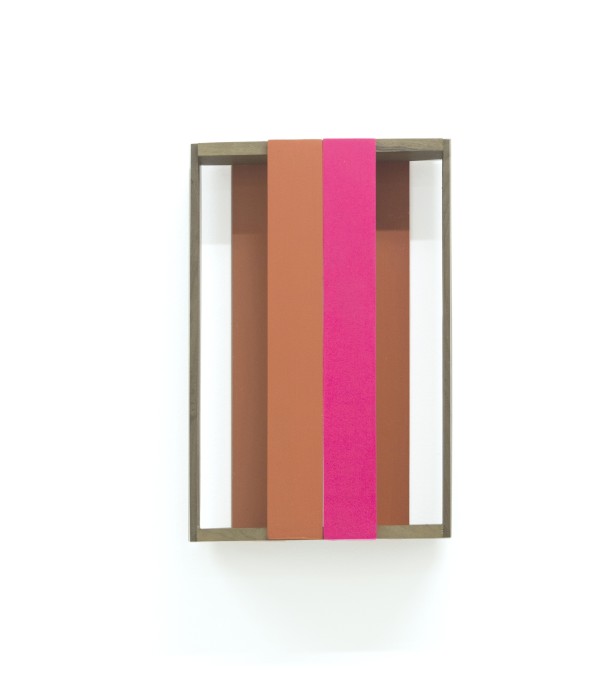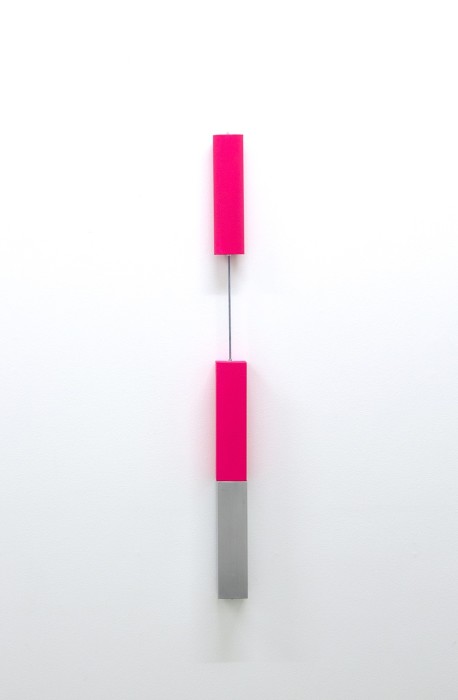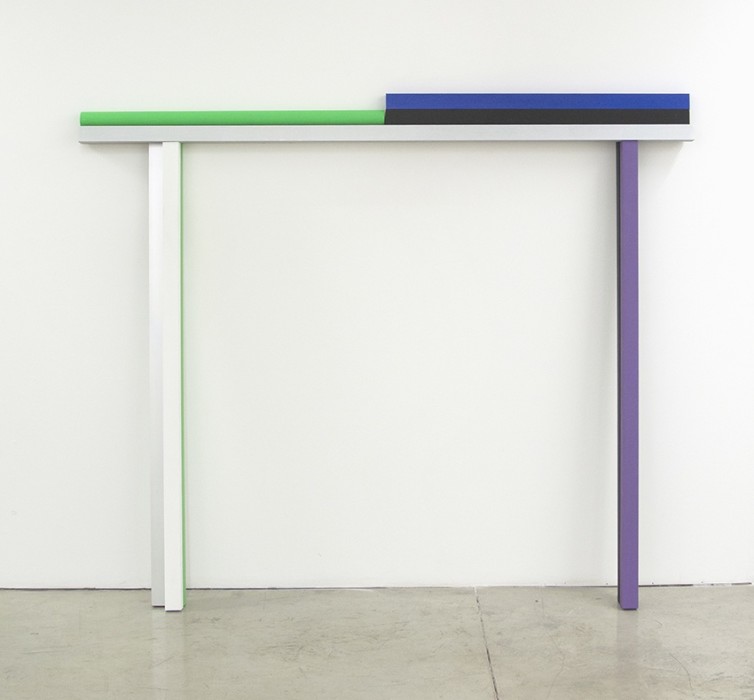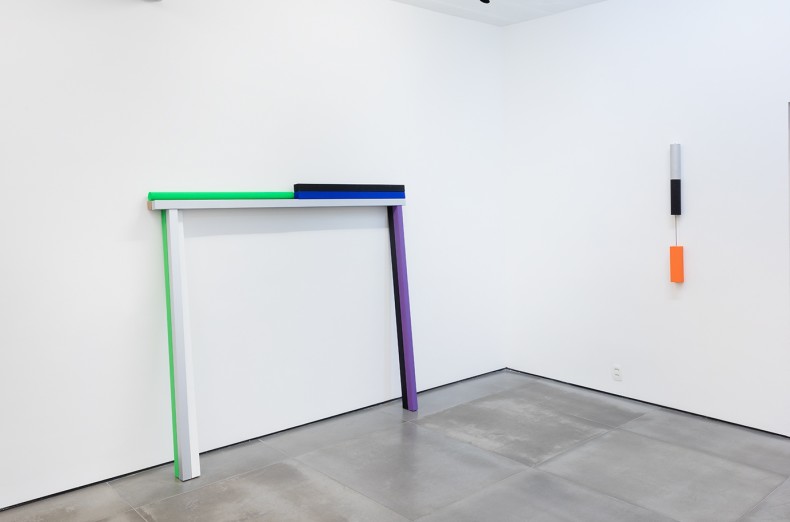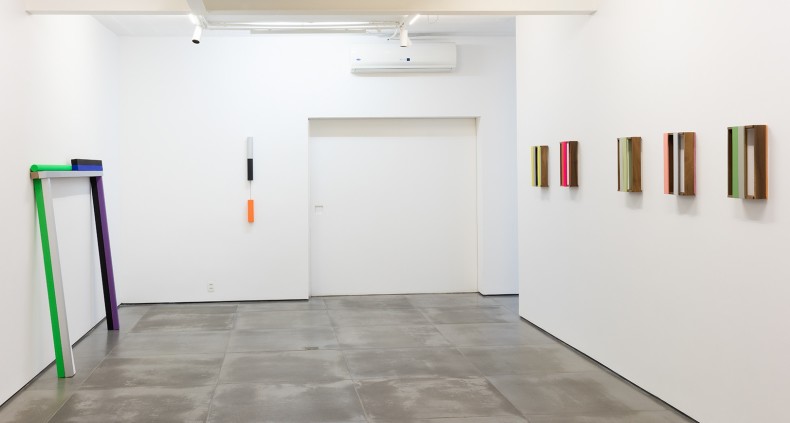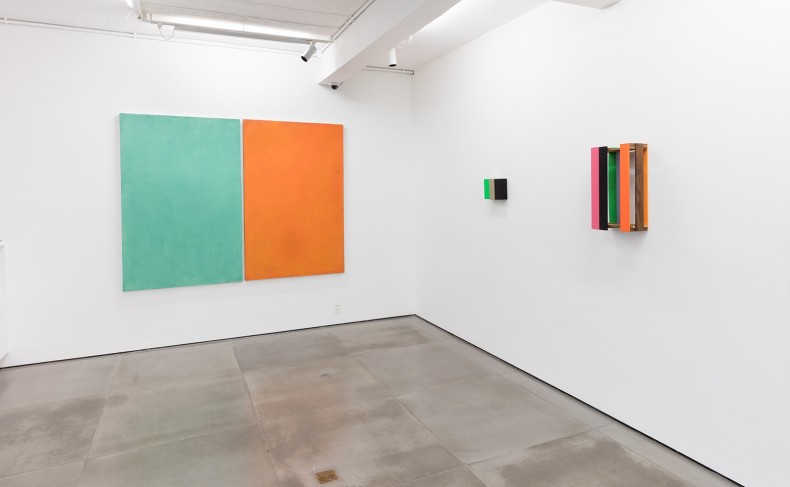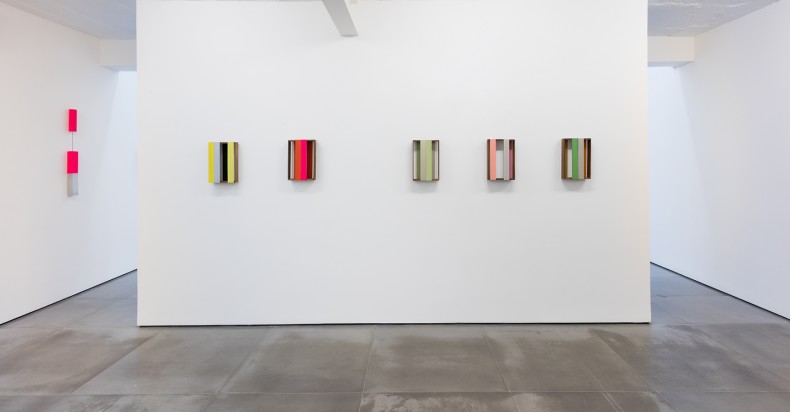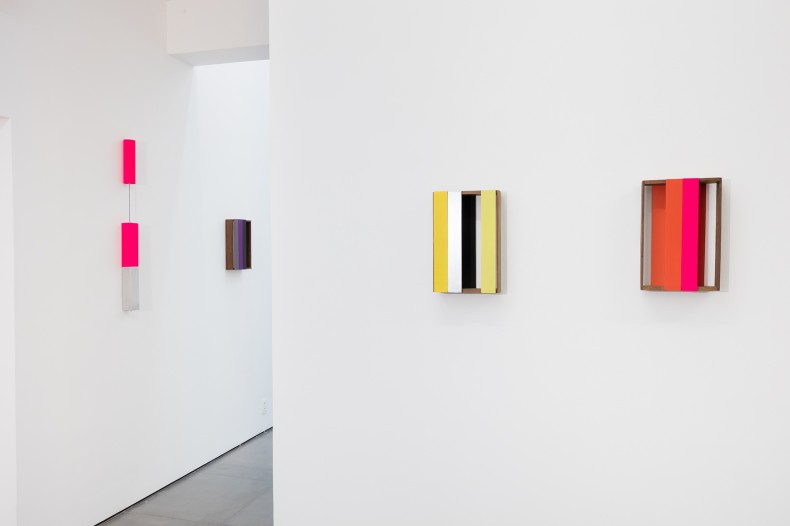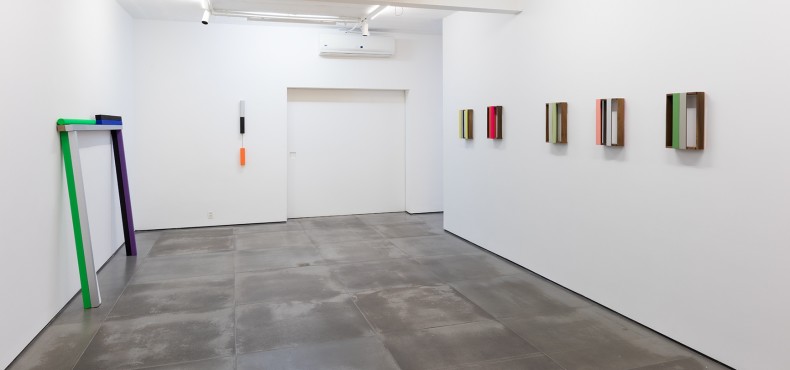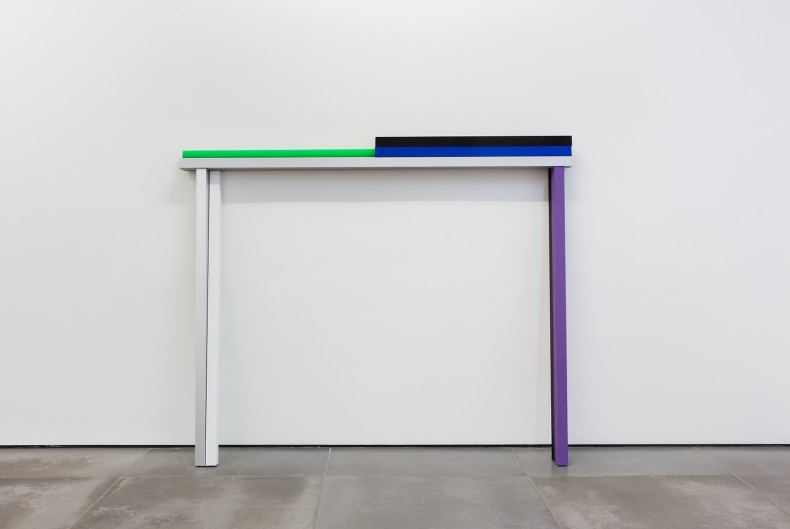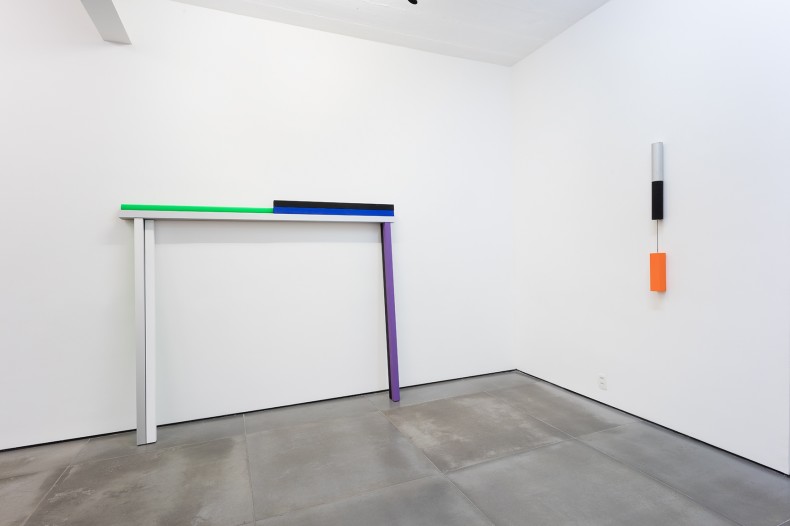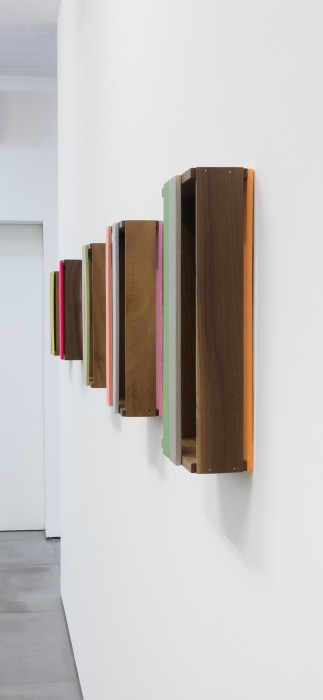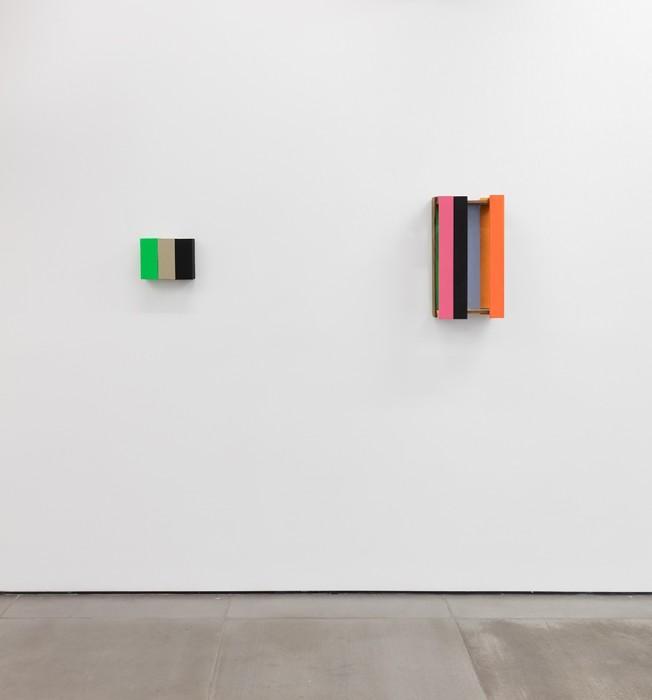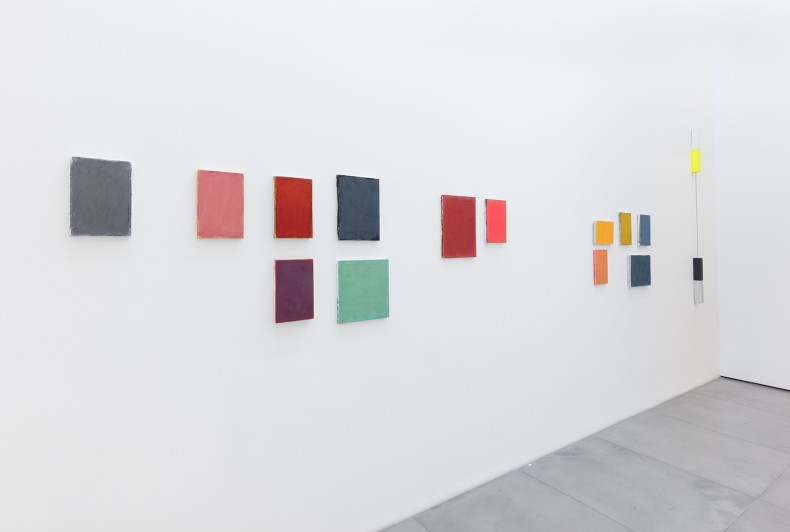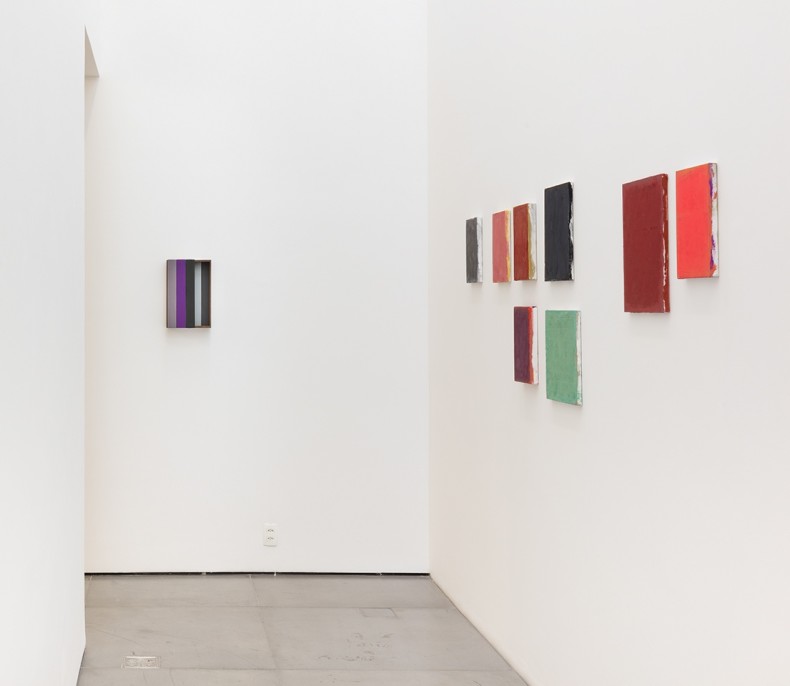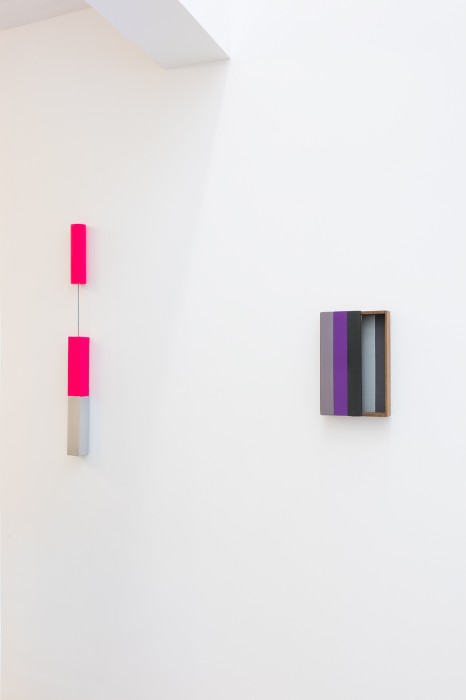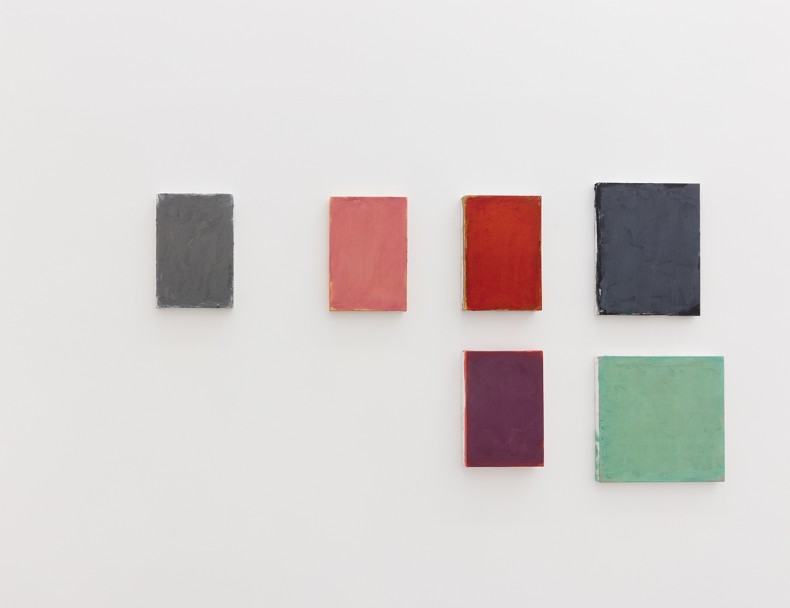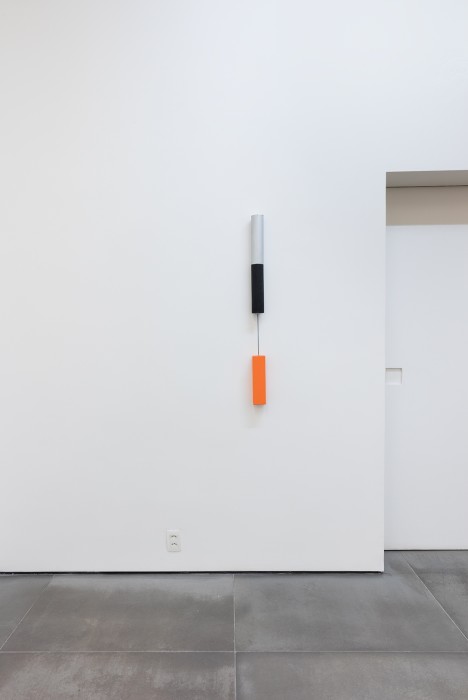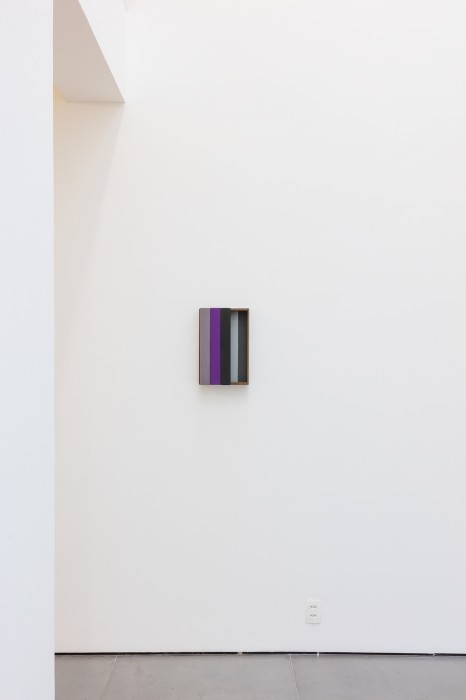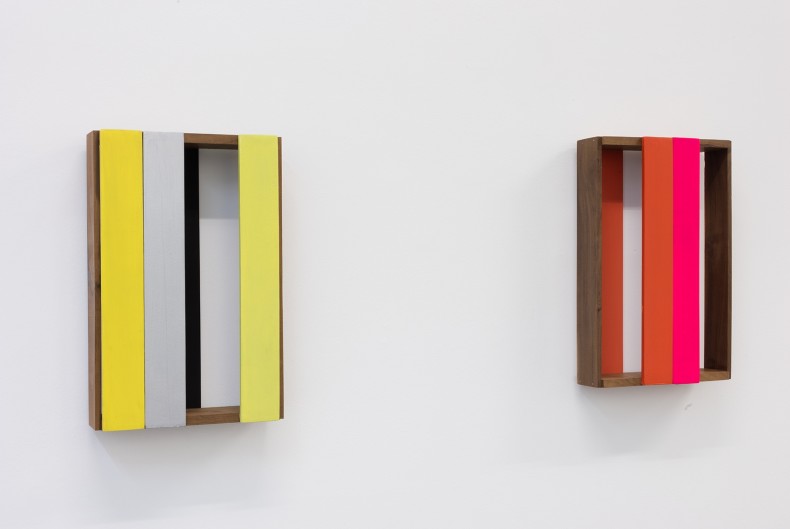In addition to his Ripas, Pontaletes, Caixas e Tijolinhos (slats, rods, boxes and little bricks), which were the defining formats of Sérgio Sister’s art practice in the last decade, the artist returns to traditional painting in his first solo show at Galeria Nara Roesler | Rio de Janeiro, and the fourth since he joined the roster of the São Paulo-based gallery. The show features some 25 never-before-seen artworks dating from 2015 to 2017 that see Sister proceed with his ongoing exploration of color, light, and monochromes, in an interplay between surface and three-dimensionality.
This exhibition is a development of the artist’s solo exhibition Ordem desunida (Disunited order) at the gallery’s São Paulo venue in 2015. Now, the Rio public will be able to check out new pieces from a number of series: Caixas – objects built from fruit crates that sum up the artist’s oeuvre in relationships between colors, light, shadows, and depth –, Pontaletes – painted rods propped against one another to create geometric compositions – and Tijolinhos – wall reliefs that reaffirm spatial concepts by using wood, aluminum and cloth-covered aluminum, with colors applied.
Also featured are several paintings created over the last two years using the artist’s trademark technique: the superimposition of chromatic layers, allowing different color fields to coexist harmonically. According to exhibition text author Tiago Mesquita, who wrote the essay for exhibition, Sérgio Sister converts a plane which at first seems monochromatic into a heterogeneous canvas with numerous variations. The art critic notes that the artist isn’t interested in the immediate perception of the differences between things. The contrast happens between similar elements, surfacing in a meditative way, in a process that’s achieved in a subtle way. “Sister paints delicate passages of hue and light,” he concludes.
In combining wax or metallic pigments with oil paint, Sister reveals the brush’s path across the canvas, evidencing the complexity and heterogeneity of his painting, even when color variations are few. Mesquita points out that the surface of the canvas is at once a continuous plane of color and an accumulation of small, unrelated optical phenomena. “A continuous color stretching itself out and countless elements coming together in a more or less chaotic way. Although the color keeps it all together, the plane takes on added complexity – it might be a mosaic, with shards seeking some unity. There are fractures, more so than a synthetic image. These fractures or intervals are perhaps what the artist is interested in the most.”
